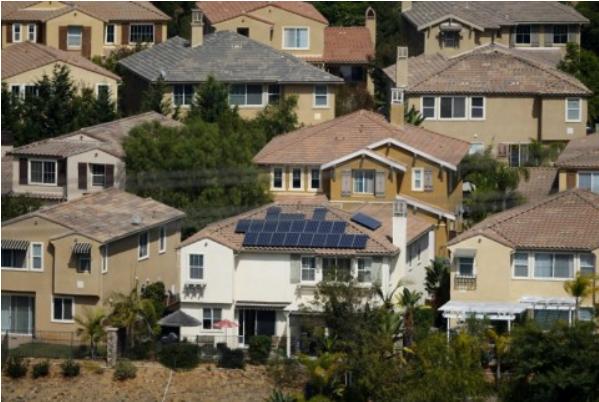
Investigadores de las universidades Yale y Connecticut, examinaron las principales motivaciones que llevan a las personas a instalar paneles solares en los techos de sus casas. El estudio, realizado en distintas residenciales de la ciudad de Connecticut, EE.UU, y dado a conocer en el Journal of Economic Geograph, arrojó que la razón no es otra que el interés de ser considerado una persona ecológica dentro de la sociedad.
Who chooses to install solar panels on their roof? You might assume that the people who do so are probably fairly rich (an average installation can cost around $35,000, prior to tax credits or other incentives), and most assuredly, politically liberal. They can afford it, and it fits their values to boot.
According to a new study, though, politics and income may not be such important factors after all. Examining the spread of solar photovoltaic residential installations in Connecticut, two researchers at Yale and the University of Connecticut found instead that the single most important factor driving whether a given house installed solar was peer influence — whether other houses nearby had recently done so. In other words, much like with buying a Prius, it looks like installing solar has a lot to do with how you want people around you to think of you. «People have called it green envy before, where you want to be green so that you can show off your greenness effectively,» says Yale’s Kenneth Gillingham, a professor at the School of Forestry and one of the study authors.
The research, just out in the Journal of Economic Geography, was conducted by Gillingham along with the University of Connecticut’s Marcello Graziano. Using data from Connecticut’s Clean Energy Finance and Investment Authority, which provides incentives for solar installations, they geocoded the location of 3,843 residential solar photovoltaic units in the state between the years 2005 and the end of September 2013, tying each one to a «block group» as designated by the U.S. Census. (In general, a block group is comprised of between 600 and 3,000 people.) They also recorded the date when the initial application for an installation was made.
And hence the dramatic finding: The installation of one additional solar photovoltaic rooftop project within the past six months in a given area increased the average number of installations within a half mile radius by .44, or almost one half. As the spatial area widened, meanwhile, the influence of peer solar installations steadily decreased, a finding quite consistent with a theory of peer influence. Within a mile radius, the installation of one solar panel in the prior 6 months increased installations by .39, and within a 1 to 4 mile radius, by .12. This dovetails with past work by Gillingham and a colleague in California, which found that within a given zip code, one new solar installation increased the odds of another by .78 percent.
But while prior installations seemed to have a big influence on future ones, Graziano and Gillingham failed to find nearly as much of an influence for other socioeconomic and demographic factors. That included income, political party registration, and the unemployment rate. «I was expecting it to all be the wealthy communities,» says Gillingham. «Pretty much, solar is going to be in the wealthiest places in Connecticut. But the pattern wasn’t that way at all.» It’s not that a lot of poor people were installing solar panels, of course–but a lot of middle income people were.


